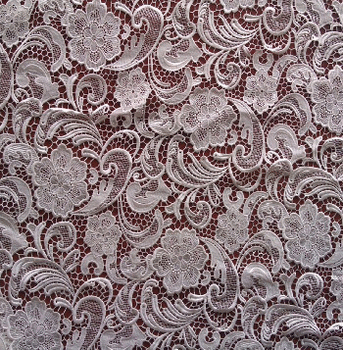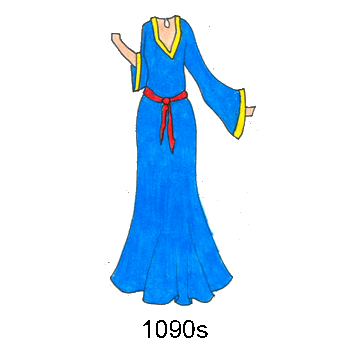What are you wearing right now? Did you choose the clothes? Did you think about comfort or how they look or how they function? Did you dress to be warm, to be formal, to play sports, or to graduate from high school? When you meet a person, do you catch yourself looking at what they are wearing? As pattern seekers, we make assumptions about a person from what they are wearing. We might think that they are stylish, conservative or radical, wealthy or poor. Fashions sometimes suggest a person’s mood as fun loving or serious, event specific or clothing for any time of day. We must think carefully about judging people from their clothing. On the other hand, fashion design is the practice of designing and fabricating clothes that are suitable and practical and sometimes celebratory. Like vernacular architecture, fashion designs started out of necessity from local materials in response availability and local weather conditions. The color, material, and cuts or patterns captured the culture, religion, and climate of the area.
Fashion reflects the culture of a people and the place!
Activity 1 – Sewing
Knowing how to sew is a fundamental skill of fashion designers. Learning to sew by hand before learning how to use the sewing machine is essential. To get started, you will need a sewing needle, a spool of thread that will fit in the shaft of the needle and several materials. Follow along with this video and begin a career in sewing! There are infinite materials each with different capabilities and endless colors and thicknesses of threads. Each combination requires its needle type. Visit a fabric store to explore what is possible! There are also many types of stitches to learn. Make a diagram of several patterns of hand stitching and practice them.
Sew your clothes!
Activity 2 – Materials

The foundation of fashion is fitting materials on the human figure. Learning about types of materials, their functions and how they look, feel and perform is critical. Materials can be soft as velvet or harder like plastic or leather. They can be warm like wool or cool like linen. Take a look at the clothes that you have. Determine what materials you own. Take pictures of the materials and make put them together into a matrix quilt. Look closely at the weave, the size of fibers and characteristics of the materials. Materials are beautiful and come in an infinite number of colors, thicknesses, and patterns.
Become a material artisan.
Activity 3 – Buttons, zippers, snaps & Velcro!
Also essential to fashion design is how the clothes are closed to fit on the body. While a form fitting tee may easily slip over your head without any closures, buttons, zippers, snaps and Velcro are common in our jackets, pants, skirts and blouses today! Each closure systems requires different integration into the article of clothing. The button fits into a button hole. The zipper connects two pieces of fabric. Velcro fasteners involve stitching or gluing of the two sides onto two separate pieces of material. Take inventory of your clothes. Tally how many elements your closet and dressers hold. Make a bar chart to see which is the most common joint material.
Activity 4 – History of Fashion for Women

Fashion design has come a long way. From wearing very light clothes made of linen or cotton that had no color in Ancient Egypt to women wearing linen garments called shifts in the 17th century, women’s clothing has moved from purely functional to an extensive array of expressive clothing types. From an all in one garment to underwear and over wear, women layer their looks. Research the history of female fashion and illustrate four different looks from the past to the present. Look at this history site. Fashion often circles back to previous styles. It’s 2017, and the 90’s fashion trend is coming back and making a hit! Know your clothing periods!
Activity 5 – History of Fashion for Men

Fashion for men has also changed. Men didn’t always wear suits and ties. For example, heels were first worn by men for the purpose of increasing their heights! In some cultures, it is common for men to wear skirts or kilts. Watch this video of how men’s fashion has changed from 1915 to 2015. It may seem like a short period, but fashion trends change very quickly.
Draw three different fashions for men from the past.
Activity 6 – The Fashion Industry
Fashion Design as a field started in the 19th century with the shift from only handmade clothes to mass produced garments. Today, there are three types of fashion—Haute Couture, Ready-To-Wear, and Mass Market. Haute couture, French for high sewing, high fashion, or high dressmaking, is custom made fashion for a unique person or customer. Museums often exhibit costume collections worn by famous individuals. Haute Couture is the practice of designing costumes for individual patrons for significant events. It is the creation of talented designers from fashion houses that work with clients through in-person fittings using the finest and most expensive materials. Ready-To-Wear fashion, on the other hand, is mass produced in garment factories. It caters to a broad public offering a range of ‘standard sizes.’ Finally, Mass market fashion is the most common type of clothing sold today. Sometimes known as ‘fast fashion,’ these designs cater to a much wider range of customers. They are mass-produced with inexpensive materials and more affordable. Mass-market clothing attempts to keep up with the trend of higher fashion labels but at a lower price. What do you like to wear? What do you dream of wearing? Draw an article of clothing in a three types of fashion-Haute Couture, Ready –To-Wear and Mass Market.
Activity 7 – Fast Fashion
Fast fashion, also known as mass-market fashion, is the contemporary mainstream of clothing today. Fast fashion caters to a general audience of consumers. Fast fashion keeps up with haute couture trends is offered to the public at a lower price. It uses much simpler techniques and lowers quality materials in making the clothes. Designers and brands produce clothes and accessories at a much faster pace while making more profit. While fast fashion offers inexpensive and trendy clothes, it is also making a negative impact on the environment with its throw-away culture. Watch this video about fast fashion and the impact of discarded fashion on the environment.As trends quickly change, people discard clothes that quickly go out of style. The result is mountains of rejected clothes. Fast Fashion can be repurposed, recycled and reused.
Make a list of solutions that could potentially solve the problems that fast fashion is producing.
Activity 8 – Trash Fashion
Don’t worry; a solution is sustainable fashion! With excessive waste produced by the garment industry, reuse and repurposing of used clothing are on the rise to decrease the problem. Companies are taking the lead on sustainability by having people donate unwanted clothes to discount resale shops. Some designers produce new lines made with recycled materials. There are now fashion labels committed to being eco-friendly and sustainable. Sustainable fashion doesn’t just help the environment; it also creates a whole new innovative industry! Take a look at Beeco Green Clothing Fabrics for Sustainability. Look for shirts, pants, coats, and more that don’t fit or that you do not wear anymore. Draw some designs for ways you can turn them into clothes you would want to wear.
Host a Trash Fashion or Trashion Show at your school!
Review
Explore
- Apparel Industry Trends
- Bethany Williams Fashion Designer London
- Chanel
- Claire McCardell What Shall I wear Book
- Couture a Blend of Fashion, Technology & Architecture
- Dolce&Gabbana
- ELLE Designer Files
- Ergonomics, Henry Dreyfus, PDF
- Fashion Design Research Guide Uni of Cincinnati
- Fashion Design Research Journal Bob Martin
- Fashion History
- Fashion.net
- Fashion Revolution
- Free 2 Work
- Gudrunsjoden
- Health Care Monitoring in Clothing PDf
- Hexa by Kuho
- History Makers: Fashion Style Makers
- History of Women's Regency Fashion
- How to become a Fashion Designer
- Integrating Electronics in Clothing
- Iris Van Herpen Collections
- Iris Van Herpen Earth Rise Fashion from Trash
- Issey Miyaki
- Lahum: Shop for Education
- LilyPAD
- Massachusetts Art & Design Fashion Research Guide
- MaterialbyPRODUCT
- Musical Wearable PDF
- OMA Dior Retrospective Denver Art Museum
- Plastic Fibers in Clothes
- Ralph Lauren
- Regency Era Fashion History
- Regeneration NEXUS Clothing
- Saint Laurent Collection
- SLOW FASHION
- Smart Clothing
- Tackling Pollution in Apparel
- TEDed Lifecycle of a T-Shirt
- The Bleed Project
- The Museum at the Fashion Institute of Design NYC
- THREDUP
- Video Fashion in Motion: Yohji Yamamoto
- Video Gaze Activated Dress
- Vimeo Fashion Design Tutorial 1
- Vimeo Fashion Illustration Channel


















































